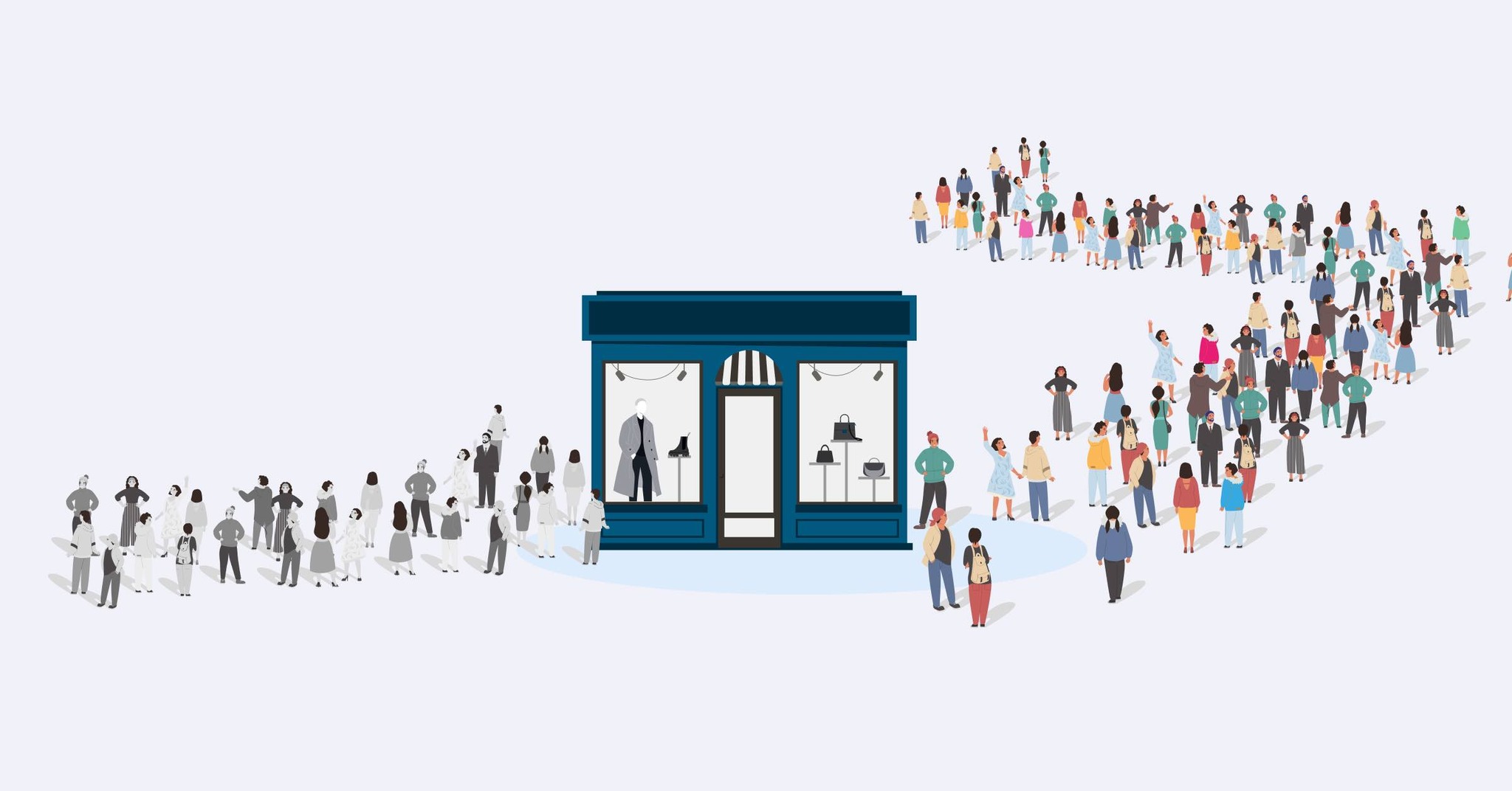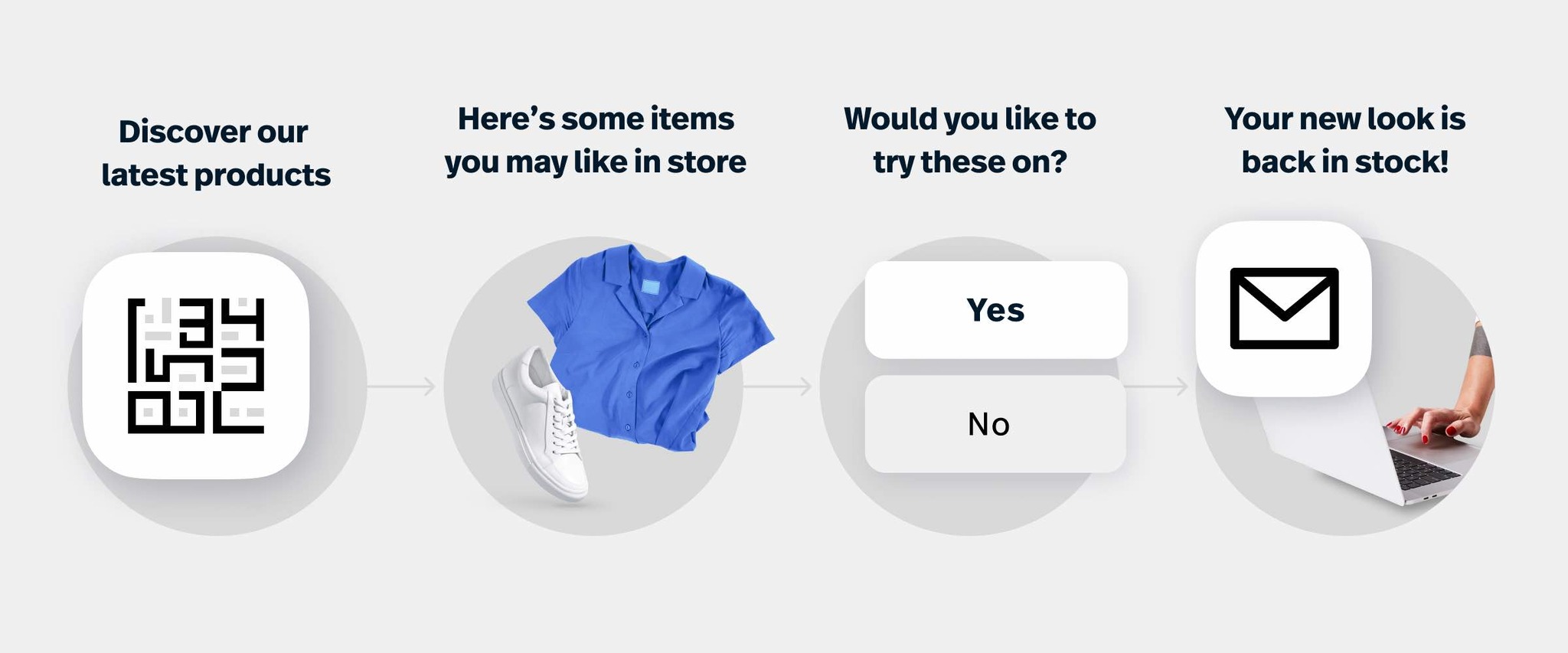
“eCommerce has changed the retail game”–that’s the understatement of the century. This isn’t just old news, it’s ancient history. We’ve had close to 30 years to come to terms with the dozens of opportunities that online shopping presents to both customers and retailers.
So has the wolf that is online shopping blown down brick and mortar stores completely?
Lightspeed’s Retail Insights and Shopper Sentiment Report for 2024 has revealed some fascinating data on the role brick and mortar stores will play in the future. Chief among them, 76% of consumers continue to favour in-store shopping.
That’s nothing to baulk at. With such a large cohort of customers still keen on popping into the shops, it comes down to retailers to innovate and meet the demands of the market rather than write off in-store shopping entirely.
At the heart of this we must interrogate the resilience and potential evolution of in-store shopping in the rapidly evolving digital age.
- Transactional vs immersive shopping experiences
- Omnichannel personalisation drives foot traffic
- Making stores the new town square
We’re in our “Retailtainment” era: transactional vs immersive shopping experiences
Retailtainment is simply the combination of retail and entertainment. The concept revolves around creating immersive and entertaining experiences within a retail environment. When done right, retailtainment generates an air of excitement and drama. And who doesn’t relish a bit of drama?
In-store shopping transforms into an immersive, entertaining experience where customers don’t merely buy products; they participate in an event.
From live demonstrations and interactive displays to incorporating elements of art and culture, retailers can elevate the in-store experience beyond mundane transactions. It’s a unique opportunity for a brand to turn their ethos and values into a tangible experience for customers. It’s something that can only be achieved through in-store shopping.
There are no hard rules as to what qualifies as retailtainment, but there are several proven approaches:
- Live demonstrations: We can do better than demonstrating how powerful the latest model of vacuum cleaner is. A live demonstration of your products in action, especially when it’s new, is a great chance to let customers handle and get used to using your products. They get the chance to ask questions and acquire more information, compelling them to buy.
- Gamification: Retailtainment can present a unique shopping experience, like challenging customers to find the thriftiest deal, or giving them an unlimited budget to shop for dream products. This experience with a product has a lot of staying power.
- Launch and tie-in events: Limited time experiences are potent tools for getting people into your store. Whether it be a new product launch, a celebrity endorsement or seasonal event, the chance to be part of a once-in-a-lifetime experience is too good to pass on.
The are several advantages retailtainment presents to customers:
- Practical understanding of how products work
- More confidence in committing to a purchase
- Stronger emotional connection with your brand
In fact, Lightspeed’s report reveals that 56% of consumers are drawn to physical stores to view products in real life–including samples and product trials. Another 46% of shoppers place immense value on the ability to compare similar products within a tangible retail setting. A further 21% of shoppers prioritise drawing inspiration from shop displays.
So why does retailtainment matter? In 2024, it’s not just about making a sale; it’s about crafting an immersive and memorable shopping experience. The modern consumer expects more than a transactional relationship; they seek an emotional connection with brands.
This time, it’s personal: engaging communities with omnichannel personalisation
One key area where in-store shopping can excel is personalisation. From personalised shopping assistants to tailored in-store promotions, retailers can leverage data analytics to provide a bespoke experience for each customer.
According to Lightspeed’s Retail Insights and Shopper Sentiment Report, 25% of shoppers seek a personalised and attentive shopping experience that goes beyond generic interactions.
Contrary to the notion that technology only benefits online shopping, the integration of innovative technologies in in-store shopping is becoming increasingly prevalent. Smart shelves, interactive displays, and augmented reality experiences contribute to a seamless blend of the physical and digital realms. These technologies not only enhance the shopping experience but also provide valuable data for retailers to understand consumer behaviour.
Picture this immersive scenario:
- A customer comes into your store and is greeted by an interactive display.
- They are prompted to scan their unique customer code from your brand’s app.
- Based on their purchase history the app can recommend new products in stock or even remind them they can pick up an abandoned cart item from a prior online shopping experience.
- With a shortlist of items now paired with their mobile device, a customer would now be incentivised to enter the store and try the items.
- Alternatively, you could notify customers via an app or email that items they may like are now available and can be held for them to try on, even prompting with a calendar reminder to try on the new items in store.

It might sound like science fiction, but this is a prime example of how retailers can leverage a fertile ground for building excitement and connection with customers. This kind of omnichannel personalisation goes beyond the generic flash sale or loyalty program. It’s attentive to a customer’s interests, and positions your brand as one that prioritises the customer’s convenience.
Setting realistic expectations for omnichannel personalisation
While this holistic customer journey would be a dream, as McKinsey and Co point out, there are plenty of barriers to this level of omnichannel personalisation. Investment in such an extensive digital infrastructure and data management is no small cost. Additionally, the sheer scale of operational changes and staff training would require a significant investment of time as well.
Don’t let that deter you. If your business has the vision, the discipline and the resources to bring omnichannel personalisation to life it can be a powerful tool to make customers feel seen and looked after.
The narrative isn’t about choosing between in-store shopping and eCommerce; it’s about finding synergy between the two. Seamless integration of in-store and online experiences, with features like click-and-collect services and exclusive in-store promotions for online customers, creates a holistic shopping environment.
The new town square: championing local and social causes
So we’ve explored how your store can be the hottest event space and a personalised retail oasis, but how can in-store shopping promote a genuine feeling of community?
Lightspeed’s data reveals that 25% of consumers value businesses that align with their beliefs and actively contribute to the local community. Special prices or deals for locals, remains a significant factor as indicated by a substantial 34% of consumers ranking it as the primary motivation for local shopping.
People love getting behind their local haunt. Waves of Covid lockdowns proved that communities are looking for a place to gather and share their values and experiences. Creating spaces that go beyond retail that attract visitors, rather than just attracting customers, is necessary to make your business a staple of the community.
Here’s a few ways you can make your business a keystone in your community:
- Run a book or gift store? Host a regular book club in store when locals can gather and discuss the latest page turner.
- Run fundraising events in store for a local cause.
- Collaborate with local artists to create limited edition versions of your product
- Establishing sustainable practices, reducing carbon footprints, and actively participating in community initiatives resonate more tangibly in a physical space.
Charting the course for in-store success
By embracing technology, prioritising personalisation, and integrating communities, retailers can not only survive but thrive in the complex tapestry of the retail landscape. The future of in-store shopping is not a regression to the past but a strategic leap forward, creating an ecosystem where tradition and innovation coexist harmoniously.
Want more data on the future of retail? Download the Retail Insights and Shopper Sentiment Report for 2024 for free.

News you care about. Tips you can use.
Everything your business needs to grow, delivered straight to your inbox.



